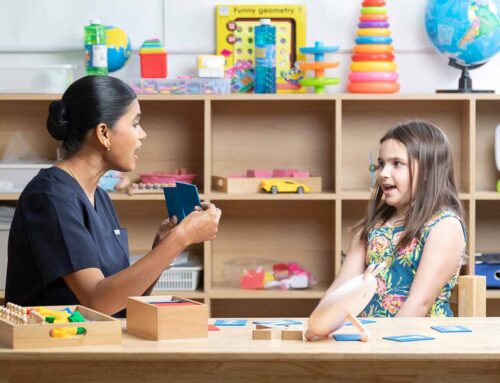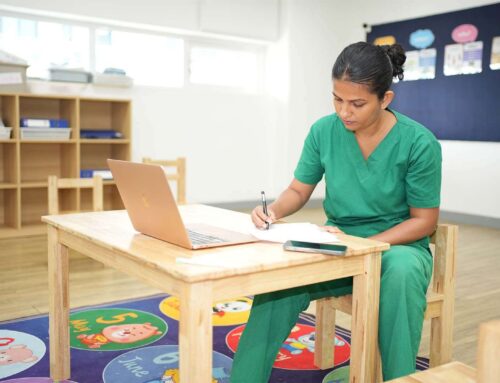When we think about speech therapy, we often focus on words, pronunciation, and vocabulary. But communication is so much more than just talking. Nonverbal communication—like facial expressions, eye contact, gestures, and tone—plays a crucial role in how we express ourselves and understand others.
At OrbRom Center in Phnom Penh, our speech-language pathologists emphasize both verbal and nonverbal skills. For children with autism, developmental delays, or social communication challenges, learning to read and use nonverbal cues can be just as important as speaking.
What is Nonverbal Communication?
Nonverbal communication includes everything we do to communicate without speaking. This includes:
-
Facial expressions: smiling, frowning, showing surprise
-
Eye contact: looking at someone while they speak or respond
-
Gestures: pointing, waving, nodding
-
Body language: posture, distance, and movement
-
Tone of voice: expressing emotions like excitement, sarcasm, or concern
These cues help us understand the speaker’s true feelings and intentions—especially in situations where words alone aren’t enough.
How Nonverbal Skills Support Language Development
For children in speech therapy, developing nonverbal communication can:
-
Improve listening comprehension
-
Help them better understand social rules
-
Encourage turn-taking in conversation
-
Strengthen the intentional use of communication, even before words are fully developed
-
Support emotional regulation and expression
At OrbRom Center, we integrate nonverbal communication training into both individual and group therapy sessions. For children who are non-speaking or minimally verbal, these skills become the foundation for meaningful interaction.
Observing Nonverbal Learning in Daily Life
Nonverbal communication is all around us. Think of a makeup artist concentrating on their work, using eye contact, subtle facial expressions, and body positioning to convey reassurance and collaboration. Children benefit from watching and participating in these kinds of nonverbal exchanges in everyday routines.
Phnom Penh parents can use daily moments—like dressing, grooming, or playing—to model gestures and facial expressions. For example:
-
Smile while greeting
-
Nod when agreeing
-
Use a “shh” gesture or “come here” motion
-
Make animated expressions while reading stories
This helps children learn to connect feelings with expressions, laying the groundwork for empathy and emotional understanding.
Supporting Children with Nonverbal Needs
Children with autism spectrum disorder or selective mutism often rely more heavily on nonverbal cues when words are difficult. OrbRom Center offers individualized strategies to teach nonverbal skills while gently supporting spoken communication.
Using tools like visual supports, video modeling, and role-play, we help children recognize emotions in others, respond appropriately, and express themselves clearly—even without words.
👉 Learn more about our Speech Therapy Services
We are the only Preschool specialized on children with special needs in PhnomPenh.
- Internationally qualified teachers
- Cambodia’s largest sensory room
- Outdoor swimming pool
- Covered outdoor playground📞 Phone: 077.455.993
Telegram Link: https://t.me/OrbRom






